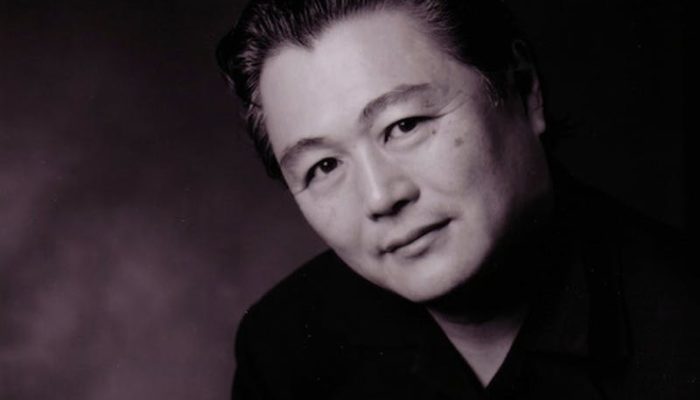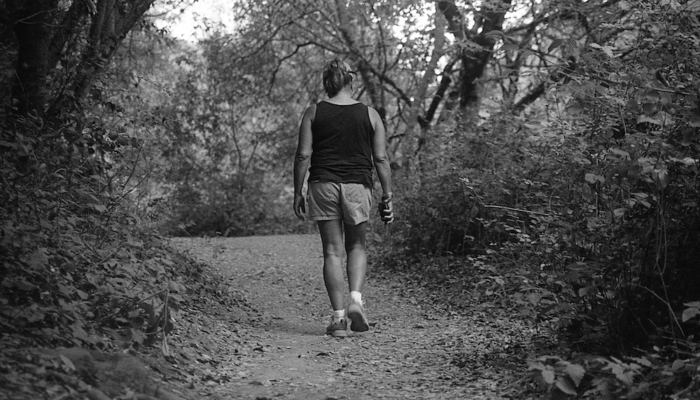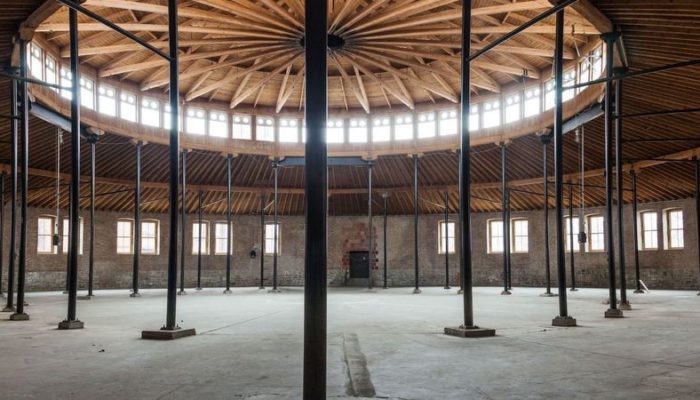White Boys Will Be Boys: My Mike Brown, White Privilege and Adolescent Mischief
Matt L. Rohrer
I grew up a skateboarder in Concord, CA, a fairly diverse but segregated suburb of San Francisco. My closest friends were very serious about skating. We spent every spare moment filming our sponsor-me video parts, perfecting our lines at the skatepark, hurling ourselves down stairs and handrails. We all wanted to believe we were going to be pros at some point in our life. But everyone knew there were only a few of us who were good to actually have a shot. Mike Brown was one of those. The really good skateboarders. With flowing style, athletic hops, technical skill, and the ability to overcome his fear enough to roll away from whatever set of stairs or gap he decided he was going to attack. Mike Brown was also one of the very small number of black kids who skated in our town. He rode BART in from Pittsburg, CA, a town 30 minutes away, near the Sacramento Delta, to shred with us and work in the local skateshop. When I saw the news, “Unarmed Black Teen, Michael Brown, Shot and Killed by Police,” I was momentarily terrified. For just a moment I forgot that I am 31, that Mike is in his 30’s too, that our days of skating the ledges out front of Bank of America, and running from the ticket-happy police were safely behind us. For a second, a terrible wave of fear and loss washed over me. I thought of all our risky endeavors via skateboarding, graffiti (the cousin of skateboarding), shoplifting, all the tense interactions we’d had with police. I thought, “I can’t believe this. It’s got to be someone else.” I hadn’t called Mike in years, but we’d maintained contact via social media so I immediately checked his Instagram page. He was alive and well and had been posting pictures of his 13-year-old daughter and a newborn baby boy. One of his friends had posted, under a picture of Mike smiling and holding his chubby cheeked baby boy in his arms, smiling: “LOL. Same name bro…”
Seeing Michael Brown’s name in the news for the past few months has stirred up all sorts of ancient memories of Mike’s and my 5-year streak of adolescent mischief.
Mike and me sneaking in the back door of the Century 5 Theatre, stuffing gummy worms from the bulk bins into our pockets before watching a marathon of shitty movies.
Mike and me at the Marriot, strolling like casual customers past the concierge towards the sparkling blue heated pool.
Mike and me crouching through the hole in the fence at the Martinez Reservoir, night fishing for striped bass. We talked about girls beneath the dull hum of neighboring oil refineries, their orange glow providing just enough for us to see our fingers, sticky with grease and blood from silvery chunks of frozen baitfish.
Mike nollie-outward heelflipping over the gap behind the Marriot. Alex was filming. Mike got so excited, he put his face in the camera and yelled, half out of breath, sweat pouring down his face, “that’s how we do it in the 925!!!”
Mike and I fishing at Heather Farms park. I’d let Mike and Francisco borrow my ancient yellow Mitsubishi van to buy Swisher Sweets. They came back 20 minutes later with the license plate missing and the bumper half broken off. Mike just shrugged and shook his head back and forth like he didn’t know what happened, all the while trying to conceal a guilty smile. He’d done doughnuts in a gravel lot until he crashed into a chain-link fence. The fence was knocked over. The van survived minus the license plate. He said he’d pay for it, but he still owes me 20 dollars.
The first time I met Mike Brown was at a bus stop at Concord BART in 1998. He was a tall, slender, good looking guy with a nose piercing, huge pants, dark light skin, and short curly hair. I’d never talked to him before but I knew that he was like me, a member of “TMK”, a graffiti crew run by a kid we knew named JJ. TMK stood for “True Mobbers Krew,” a name repped without a shred of irony as we steadily mobbed our high school bathrooms, tagging them with Pilot markers we’d stolen from art class. I’d also seen Mike at Ooga Booga Beach, local skate shop where he worked, putting together skateboards and selling sneakers. I chatted him up that day; we caught some tags on the sidewalk with our paint pens and became fast friends.
I had some awareness of racial injustice as a teen. Certain things that people would say about or to Mike rubbed me the wrong way. But in the prime of our friendship I didn’t have the vocabulary to articulate exactly why the way Mike was treated was racist/white supremacist. I remember the time we all got caught by the cops skating the Bank of America ledges. Alex and me got tickets but Mike got a ticket and was told by the cops “ Why don’t you get back on that train to Pittsburg?!” We’d all committed the same “crime” but the cops treated Alex and I like a couple of white boys having a good time. Mike apparently wasn’t supposed to be there at all.
I remember the evil looks we’d get in the 7-11 parking lot, just for having Mike around, who dared to be silly and loud, and present.
I remember Forrest saying that if “Mike Brown ollied the 13 stairs, fuck that, I’ll go there tomorrow and I’ll kickflip them.” Like Mike wasn’t allowed the glory. He wasn’t allowed to be the best.
I remember Mike smacking a kid who’d been threatening Alex at school. The smack was relatively gentle, but the next day the kid said, “Alex sicced his black friend on me.” Like Mike’s blackness made him extra brutal. Like white boy violence was acceptable, but black boy violence was crossing some unspoken line.
I remember Alex talking about Mike one night while we were fishing without him, “I hate to say it man, but Mike is a nigger just like the rest of them.”
I remember riding BART and Mike teasing Casey about the shape of his head. Everyone did it (it was large and notoriously eggish). Casey broke a glass bottle over the armrest and held it in the air, threatening to cut Mike with it. Hearing it from the group was acceptable, but from Mike it was too much, too disrespectful.
As we got older and my graffiti career progressed, I became more reckless and Mike didn’t keep up. I remember painting the fence lining the entrance to the Caldecott tunnel on Route 24 one night with my little brother. Walking straight towards the headlights of a slew of passing cars with a can of silver Rustoleum in my hand. On some level I must have accepted that I could get caught. Mike didn’t like to do stuff like that. And if he did, he was quick and cautious. Though we still hung out a lot, on the nights I went out painting trains and freeways Mike was likely to stay at home, or just sit in the car and wait. At the time I thought he was being square. I realize now that the stakes were different. Perhaps I’m projecting. Perhaps Mike was just naturally more cautious than I was, more careful. But I have to wonder if he was weighing risks vs. rewards in his mind. While a white kid getting arrested for vandalism was good old-fashioned American boy stuff, a black kid committing such crimes could be risking his freedom or his life. (Jonathan Lim, a 19-year-old Asian-American graffiti artist was shot in the back of the head by a white Vietnam vet while painting in San Francisco’s Tenderloin district in 1998, the year Mike and I met.)
I feel lucky I never got caught as a teenager. Never caught bad. The few times I got accosted by police in a train yard I was able to talk my way out of getting arrested and taken into the station. One time I told the cop I was an art student, and that I was doing research. He called my dad on his huge 90’s cell phone. My dad lied for me and the cop actually apologized and returned the spray-paint he’d confiscated. Based on the way cops treated Mike when we got caught skateboarding together, I can’t help but think things might have gone differently for him, had he been in that train yard with a crate of spray paint.
Once my brother and I got caught riding a freight train from Oakland to Los Angeles. We were charged with criminal trespassing. When we went to our court date, the clerks and prosecutors were whispering to each other delightedly, “These are the boys that hopped a freight train…” We were treated like quasi celebs, and left with reduced charges and no fines. We were just mischievous white boys having some old fashioned fun.
I have the privilege of reflecting on my time as a graffiti writer, as a skateboarder/trainhopper/shoplifter running from the cops, fondly. It was an exciting and free time in my life. I felt like I could get away with anything. Mike might not agree. I know I’m projecting again, but I wonder if he remembers that era the same way. If he felt the same sense of freedom in our delinquency. I wonder if his occasional reticence to get out and get reckless had something to do with some innate knowledge on his part, a sense that he was likely to be severely punished for the same actions that would earn me a slap on the wrist. I wonder if he is resentful. I wonder if he was afraid.
Because there were and are different consequences for young people of color.
Because there were and continues to be a different set of rules.
Because our white friend Brad, robbed 3 houses, got caught, and only had to go to juvenile hall on the weekends.
Because black-preschoolers make up 50% of suspensions and 18% of the population.[1]
Because Amadou Diallo.
Because black men are sentenced to prison terms three months longer than white men of the same age group.[2]
Because the Central Park 5.
Because young black men are four times more likely to be sentenced to prison as white men over fifty.
Because Rodney King.
Because blacks are arrested more for victimless crimes that whites commit at equal rates.
Because Ousmane Zongo.
Because Orlando Barlow.
Because for every 100,000 whites, less than 500 white boys are arrested for possession, while for every 100,000 blacks, over 1500 are arrested, despite whites and blacks using marijuana equally. [3]
Because Amadou Diallo’s murderer just got his gun back.
Because Trayvon Martin’s murderer just got his gun back.
Because Oscar Grant.
Because Eric Garner.
Because Tamir Rice.
Because Kajieme Powell.
Because Michael Brown.
Michael Brown, murdered by police in Missouri, has been severely attacked by the media. The NY Times called him “no angel.” An article released shortly after his death said that Michael Brown “dabbled in drugs and alcohol. He had taken to rapping in recent months, producing lyrics that were by turns contemplative and vulgar. He got into at least one scuffle.” Videos of Michael allegedly stealing cigars have circulated on social media. These types of articles and videos imply that the Michael Brown’s mischief, his teenager-ness, somehow create a valid excuse for his murder. American culture celebrates white boy mischief as a rite of passage, as a critical part of growing up (think Ferris Bueller, Zach Morris, the Riggins brothers, Dukes of Hazard). When white boys commit victimless crimes, it’s all hijinks and mischief and learning experiences. When black boys commit victimless crimes, our culture seems to imbue them with violence, harm, and in the case of Michael Brown and countless others, ultimately use their crimes as an excuse for their murder by police or civilians.
Teenagers do risky things like shoplift (cool ones do anyhow). They sneak into the movies, they knock over mailboxes, egg houses, they catch tags in the school bathroom. They listen to loud, profane music, dance to it in their cars, windows rolled down, asserting that the world is theirs to exist in, to modify, to enjoy. They drink the vodka that’s been sitting in their parent’s cupboard for ten years. They make fun of people’s weird shaped heads. They “scuffle.”[4] They sneak into hotels to swim in the pool. They sneak into abandoned backyards to skate in the pool. They lie about their homework. They throw paper airplanes and shoot spitballs and have fistfights and curse and smoke cigarettes. Forging a unique, critical identity occurs against rules, constructs, personalities. Like a sharpening knife, a teenager’s personhood develops against a rough, unbending world. Unfortunately, the world grinds back harder against black kids. Regular ol’ angsty adolescent development is clearly still a privilege reserved for middle class whites. I love my Mike Brown. I’m glad he survived our adolescence to raise two beautiful kids. Mike, I’m sorry I thought you were being a square. Mike, I’m sorry we still have so far to go.
[1] http://www.npr.org/blogs/codeswitch/2014/03/21/292456211/black-preschoolers-far-more-likely-to-be-suspended
[2] http://www.sentencingproject.org/doc/publications/rd_sentencing_review.pdf
[3] http://www.vox.com/2014/7/1/5850830/war-on-drugs-racist-minorities
[4] http://www.nytimes.com/2014/08/25/us/michael-brown-spent-last-weeks-grappling-with-lifes-mysteries.html?_r=0
MATT L. ROHRER’s writing has appeared in The Ampersand Review, Tinfish, Sink Review, Jellyfish, GlitterPony, No Dear, The Surfer’s Journal, WAX, and elsewhere. His chapbook, Probability of Dependent Events, was published by Beard of Bees in 2012. He currently edits the chapbook press Full Court and is a New York City Teaching Fellow. His music can be found here: www.goldenwestservice.bandcamp.com




